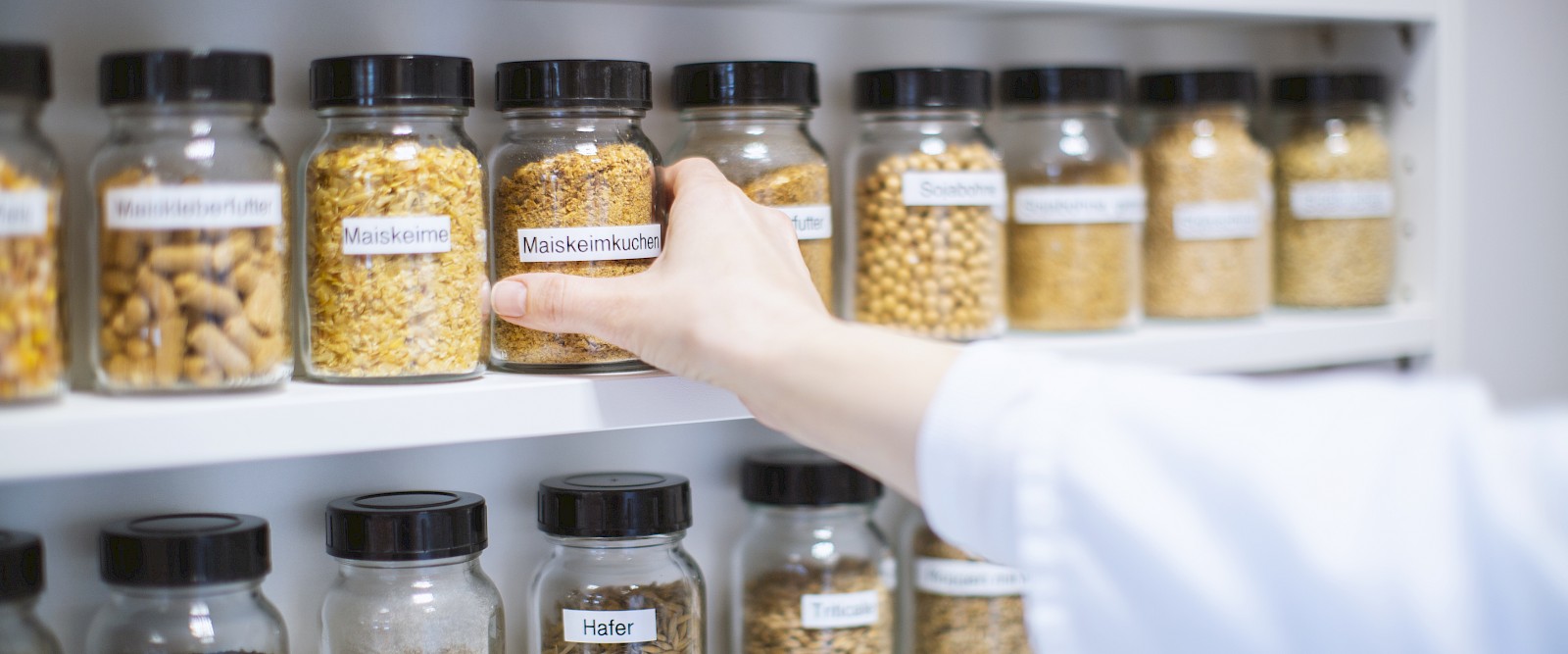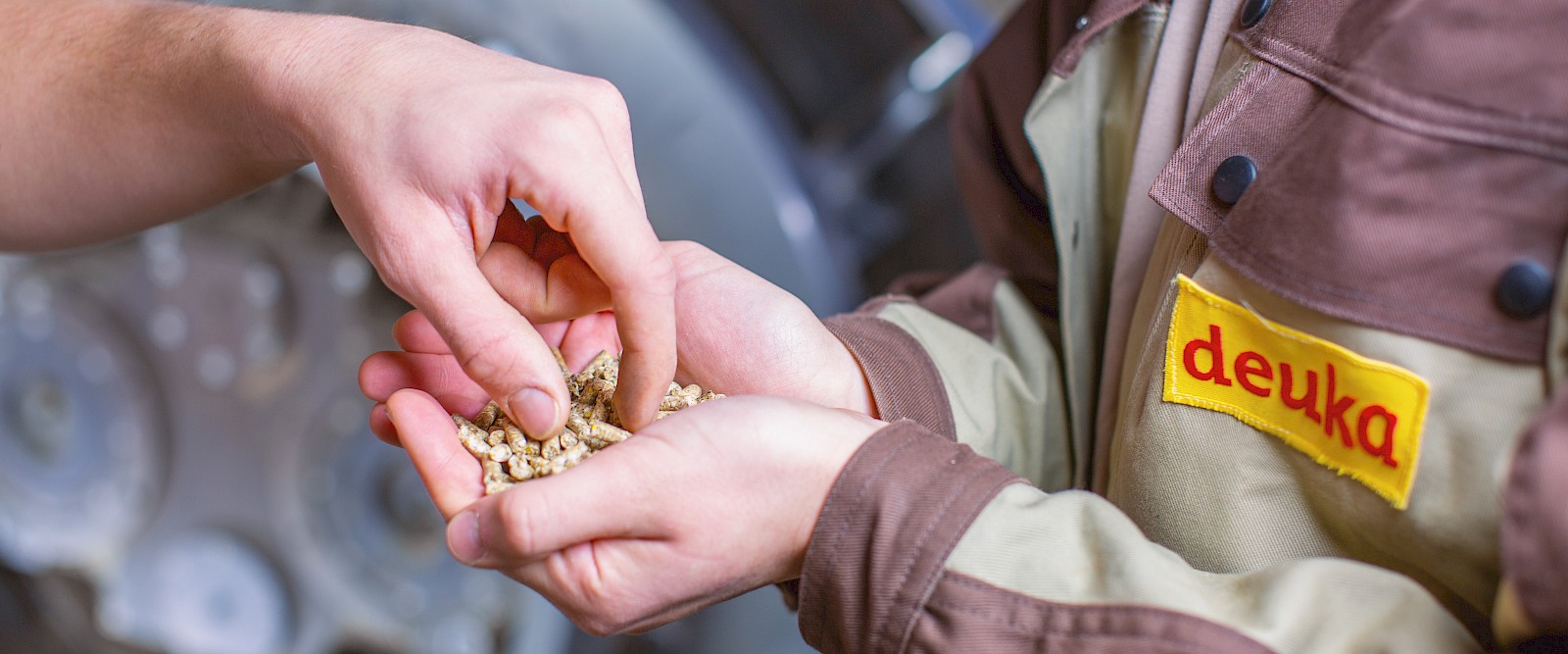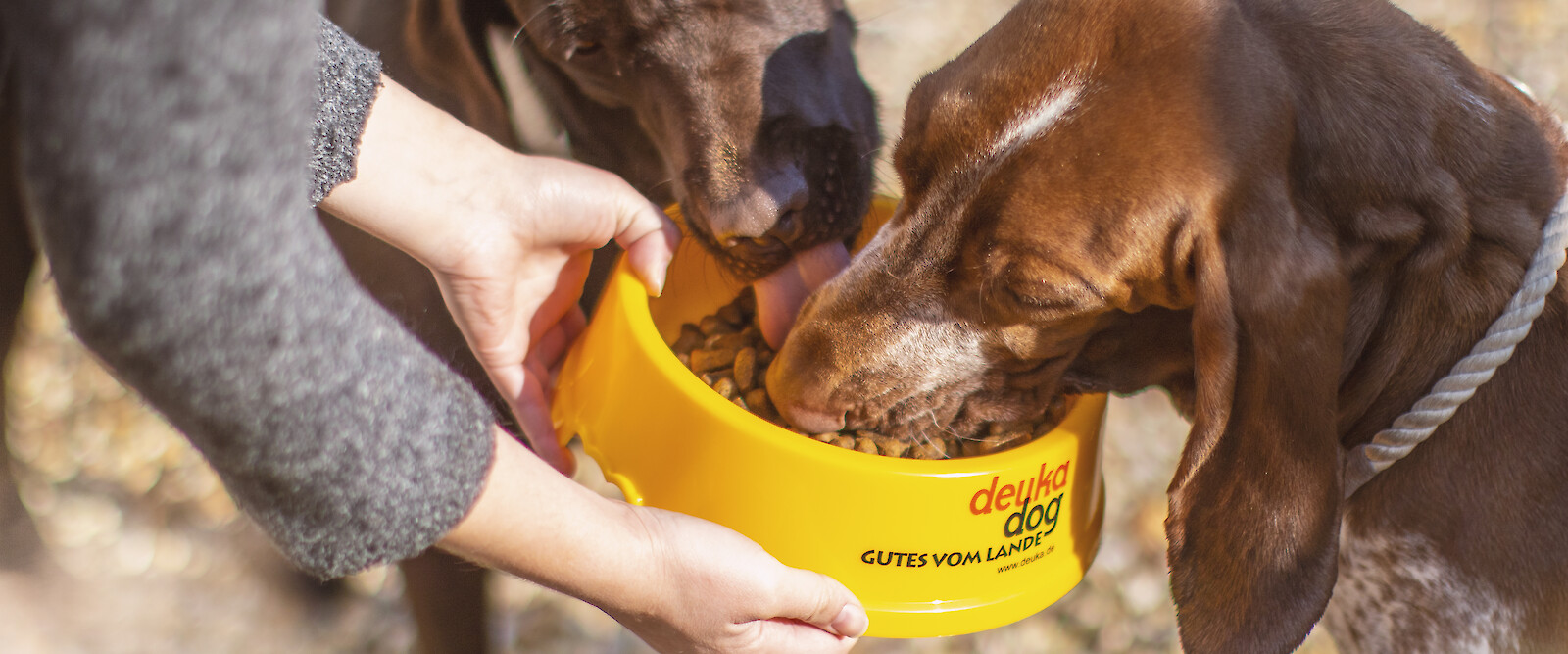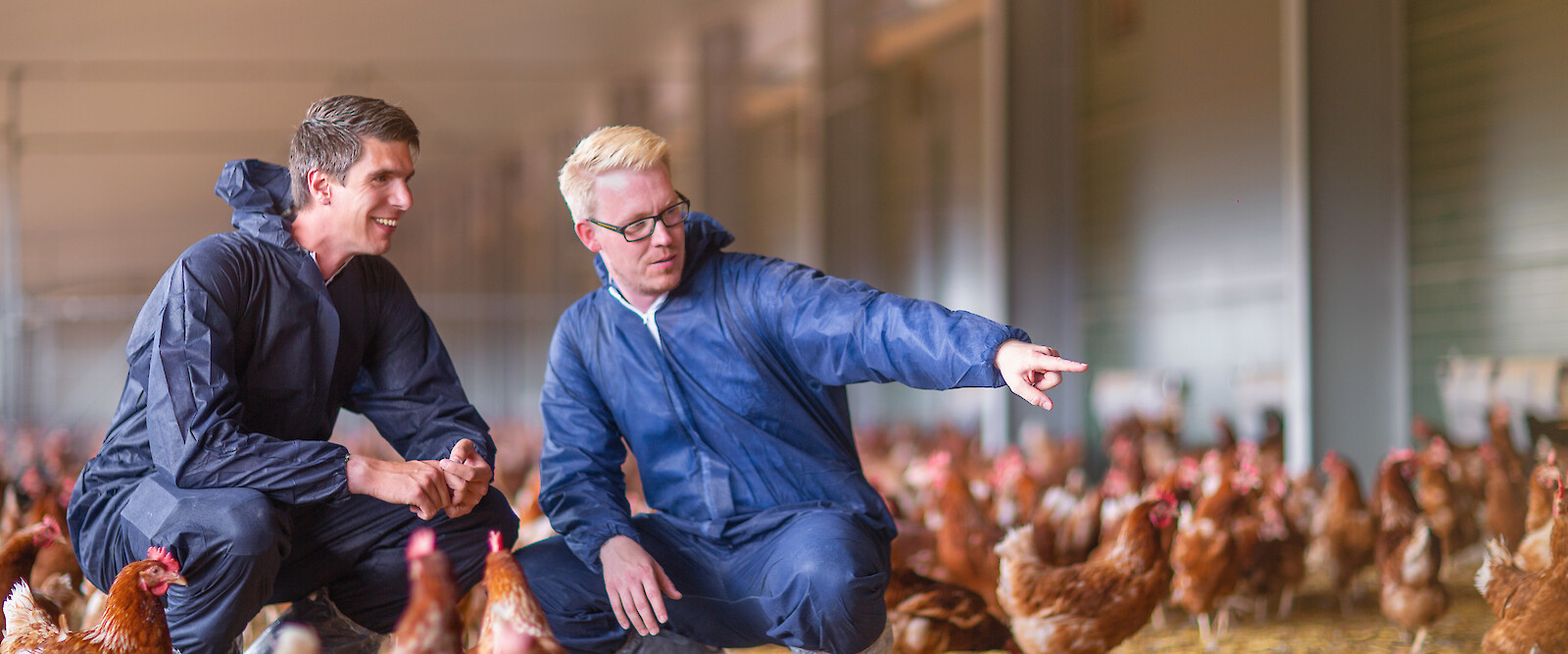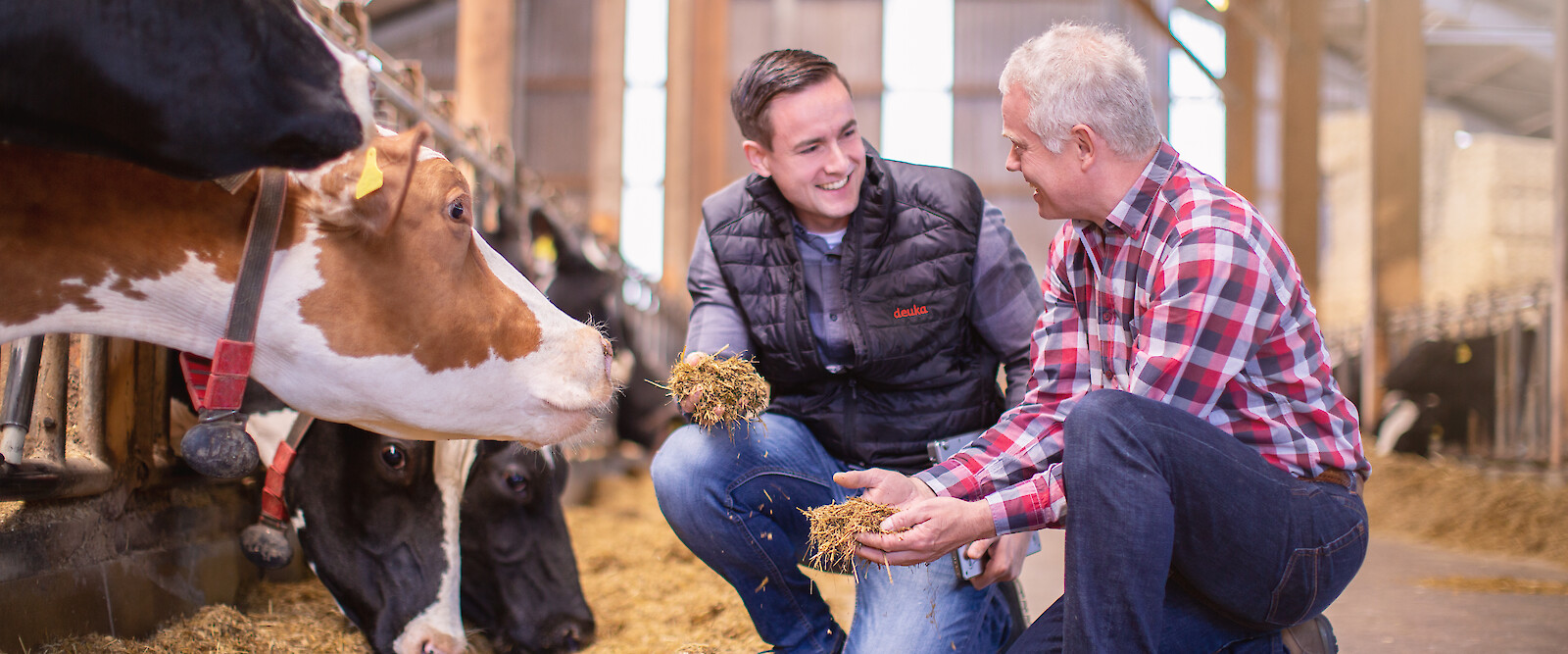Raw material and nutrient lexicon
Weitere Einträge
- Main nutrients
- Maize
- Maize germ extraction meal
- Malt germs
- Manganese
- Cassava
- Methionine
- Methionine
- Mixed feed
- Molasses chips
- Monocalcium phosphate
- Monodicalcium phosphate
Methionine
Methionine is an essential amino acid and is produced in its pure form as DL-methionine by chemical synthesis. Propylene, methane, ammonia and methyl mercaptan serve as starting materials. Methionine can be fully utilised by the animal in the DL form, as the D form is converted into the L form in metabolism. In addition to DL-methionine, a precursor of the pure amino acid, the hydroxy analogue of methionine, is also used in animal nutrition. This precursor is also produced via chemical synthesis. The DL form is converted into the L form of methionine in the metabolism. In nature, the hydroxy analogue of methionine occurs, for example, as a metabolic product of microorganisms during fermentation processes, such as in basic fodder silages. In animal nutrition, methionine is used as a single amino acid to ensure the supply of the animals depending on the type of feed and animal species. This single amino acid is of particular importance in poultry feed, as methionine is the first limiting amino acid in this species.
DL-Methionine |
|
Ingredients |
Content
|
|
Dry matter, g/kg |
1000,00 |
|
Crude protein, g/kg |
1000,00 |
|
Methionine, g/kg |
1000,00 |
|
Methionine |
1000,00 |
|
UDP, % |
0,00 |
|
nXP, g/kg |
0,00 |
|
RNB, g/kg |
160,00 |
Sources: DLG feed value tables for pigs; DLG feed value tables for ruminants; Rechenmeister 2000 (Chamber of Agriculture Westphalia-Lippe); CVB Veevoedertabel; DLG Information 2/2001 Structure and carbohydrate supply of the dairy cow
